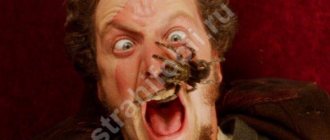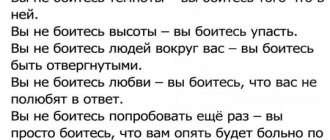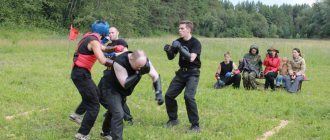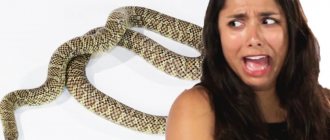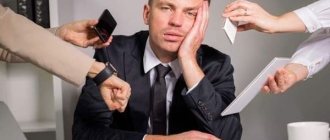What is the fear of needles and pricks called? In psychology, such a phobia as the fear of injections is called trypanophobia.
Fear of injections in adults is typical for generations in the countries of the former USSR. Based on past memories, many older people have a fear of needles. Anxiety disorder is accompanied by an inexplicable and uncontrollable feeling of fear, despair and hopelessness; there are no logical patterns of its occurrence; there are panic attacks. Even the mention of the need to get an injection is enough to show fear, not to mention the possibility of carrying out the procedure itself.
According to the results of a social psychological study, fear of an injection as an anxiety-phobic disorder is observed in almost 20% of people living in the countries of the former Soviet Union. The main prerequisite for such a spread of the disease, according to psychologists, is the insufficiently high level of medical care, as well as the incorrect, tactless treatment of patients by some doctors and other medical personnel.
Fear of needles and pricks can be quite dangerous for your health. After all, phobia forces people to avoid any injections, which makes it difficult to provide them with medical care. However, they themselves refuse it in fear that they will have to get an injection. Even in a life-threatening situation, a trypanophobe will categorically deny the need for medical manipulation.
The cause of such a phobia as fear of injections should often be sought in childhood. The fear of injections in children is formed from similar parental attitudes: “If you don’t listen, I’ll call the doctor and he’ll give you an injection.” That is, parents themselves form a child’s phobia of doctors and medical procedures.
And pain during the injection, bruises, and the general sterile and cold environment of the hospital aggravate this fear and contribute to the formation of an anxiety disorder.
The reason for the fear of giving injections can also be a genetic, “ancestral” memory associated with our ancestors’ fear of snake bites, poisonous insects and other animals. At a subconscious level, this fear is present in everyone, and only in some people it transforms into an anxiety-phobic disorder.
Causes of fear of needles and pricks
What is the reason for such prevalence of trypanophobia? Why do injections scare people so much?
The simplest and most common explanations:
- poor quality of medical care;
- insensitive attitude of medical staff towards patients;
- threats to a child by a doctor who hurts a disobedient one;
- complication after injection.
In fact, the situation with the phobia called fear of needles is much more complicated.
Scientists have identified three groups of reasons that lead to trypanophobia:
- Social factors come first. These include the incompetence and inattention of doctors, nurses, and the disdainful attitude of some health workers towards sanitary requirements. They cause fear of contracting an infection through a syringe. Some trypanophobes are firmly convinced that intravenous injections will open the door for a deadly virus to enter their body. Bad experiences in the past contribute to the development of injection phobia. An ineptly placed IV or a carelessly given injection cause the patient quite significant suffering, which in the future provokes trypanophobia. Fear most likely also develops in those who are unlucky enough to have it manipulated by a trainee who failed to hit the vein the first time.
- The psychological basis of the disease is no less common. Phobia of injections originates in childhood due to intimidation of the child by older children or adults, or improper upbringing. A negative moral attitude is fixed in the child’s subconscious, and reinforced by personal experience of painful procedures with subsequent inflammation and bruises leads to the appearance of an anxiety-phobic disorder. The impetus for the emergence of irrational fear can be a harmless, at first glance, cartoon in which the hero is punished with an injection for an unworthy act. A certain percentage of risk also comes from visiting children's clinics, where a child hears crying or sees peers screaming in fear.
- The most interesting are genetic causes. Some experts claim that the fear of injections as a phobia is embedded on a subconscious level, so people are not able to control their panic fears. Psychiatrists believe that the injection is associated with the deadly bites of poisonous snakes and insects that killed our ancient ancestors. Fear of the sight of one's own blood also leads to the development of a fear of injections.
Patients with type 1 diabetes mellitus can become trypanophobic. Constant injections of insulin in some cases lead to panic fear just by looking at the syringe.
Consequences of advanced phobia and prevention
Not all diseases can be cured with pills, and most tests involve donating blood. Trypanophobes go to great lengths to avoid a frightening procedure; they delay treatment until the last minute, which in some cases can cost their lives.
Fear of injections most often occurs in childhood, so parents should take care of prevention. You need to support the child, playfully take him to the doctor's office. You cannot intimidate, threaten, or forcefully drag you into the office.
As a preventative measure, adults are advised to carefully choose a medical facility. When you find yourself in the office, make sure that the specialist washes his hands, takes a disposable syringe and needle, and opens the equipment in front of you. It is necessary to pay attention to the behavior and speech of the health worker; you do not need to tolerate rudeness and an attitude that does not suit you. Follow your doctor's recommendations. If possible, ask to take a supine position, this will make injections or blood sampling for analysis easier to bear.
Frightening situations. Manifestations of the disorder
The less fear you experience, the less danger there is. © Titus Livius
People tend to be afraid of objects that can cause pain.
Russian psychologists conducted studies of phobia-dependent patients and established the main situations that cause panic anxiety.
Based on the results obtained, the following types of fear of injections were identified:
- The moment of puncture is frightening because the needle will be blunt, it will painfully enter the tissue, and it will pick at the skin;
- the presence of air bubbles in the syringe, which can enter a vein and lead to serious complications and even death;
- incorrect insertion of the needle will result in the formation of a hematoma, bump, bruise at the injection site,
- failure to maintain sterility will cause inflammation, and it will develop into an abscess requiring surgical intervention;
- the needle may break and remain in the body, or even worse - it will reach the bone and damage it;
- vaccinations provoke cancer;
- through an injection you can become infected with AIDS, hepatitis;
These mythical fears can cause serious harm to health, since quite often in case of a heart attack or blood poisoning it is impossible to do without intravenous injections or drips. All fears of those suffering from a fear of needles and injections are associated with a natural reluctance to experience pain, but in most cases they are devoid of common sense. Therefore, you need to get rid of them.
Review
This condition was officially recognized in 1994 in the DSM-IV (Diagnostic and Statistical Manual, 4th edition) as a specific phobia of the blood-injection-injury type. The fear of needles response causes sufferers to avoid vaccinations, tests and, in more severe cases, all medical care.
It is estimated that at least 10% of American adults suffer from the disorder, and the actual number is likely higher since the most severe cases are never reported due to the sufferer's tendency to avoid all treatments.
Forms of the disorder, symptoms
Injection phobia, according to experts, exists in 3 main forms, each of which has its own symptoms.
The most common, covering almost 50% of all cases of pathology, is the vasovagal form. Doctors suggest that it is genetically determined and inherited. The reaction of fear, fainting, is caused by the sight of a needle, its touch to the skin. An attack sometimes begins from the thought of a possible injection. There is a theory that in prehistoric times, people developed the ability to faint at the sight of arrows, knives, spearheads, as well as blood (usually someone else's). Losing consciousness and lying motionless on the battlefield helped to survive in intertribal clashes, and the genes of fear were passed on to offspring. This is an effective survival strategy.
The vasovagal form is characterized by the following set of symptoms:
- ringing in the ears, rapid heartbeat;
- pallor, muscle weakness;
- nausea, sweating, dizziness;
- changes in blood pressure.
Fainting conditions lead to the development of a secondary phobia. Patients are afraid not of an injection, but of loss of consciousness and its consequences - hitting their head on the table, possible laughter from witnesses, shame.
In second place in terms of prevalence is associative phobia of injections, which torments about 30% of all patients. It develops mainly against the background of negative childhood experiences. This variant of the disorder arises, for example, due to a false cause-and-effect relationship. The child saw how a seriously ill relative was given an injection, and after some time this person died. The kid perceives the situation as if the injection became a killer.
The associative form of phobia is manifested by the following symptoms:
- panic attacks, causeless crying;
- long background alarm;
- insomnia, headache.
Approximately 20% of disorders are occupied by the resistive form. It is connected not so much with the fear of an injection, but with the fear of being helpless and immobilized during the process of medical intervention.
This form of the disease develops due to improper behavior of parents or health workers: during the injection they shout at the child, roughly hold the arms and legs, and cover the mouth. The kid assesses what is happening as a betrayal on the part of his father or mother, who allow other people's uncles and aunts to torture him. Experienced stress leads to panic fear.
At the physical level, resistive phobia of injections manifests itself as follows:
- tachycardia;
- increased blood pressure;
- muscle tremors;
- hostility, aggressiveness.
Any form of trypanophobia can be intensified by a trigger - an event or object that causes re-experiencing psychological trauma. A panic attack often occurs at the sight of blood, wounds, doctors, people in white coats, medical institutions, images of syringes with needles.
Symptoms
When a person gets scared, a large amount of adrenaline is produced in his body. Accordingly, the pupils dilate, the skin turns pale, due to the fact that the blood “leaves” into the muscles.
After all, the natural reaction in a moment of danger is to run away. Breathing becomes frequent and shallow, and tremors may begin from excess tension. That is, your hands, chin and lower lip shake, your legs give way.
To make running easier, the body gets rid of excess weight. Therefore, you immediately want to go to the toilet, diarrhea occurs and even in some cases vomiting. The temperature drops, chills and profuse sweating appear, despite the cold in the room.
The perception of the surrounding reality at such a moment is limited, therefore trypanophobia is not capable of thinking rationally and submitting ideas, words to criticism and logic.
What can I say, a person during a panic attack sometimes does not notice obvious obstacles. Because of which he gets injured, accidentally injures others, and so on.
For example, he jumps out into the street and gets hit by a car, falls through a hatch, or falls down the stairs.
All of the above symptoms occur at the mere mention of using a syringe. Depending on personal characteristics, the intensity of panic attacks will vary.
Let's say that one person with this disorder begins to have heart pain and he gets even more scared, because he decides that he is going to die right now. While another, less emotional person, will simply have sweaty palms and have breathing problems.
Usually after an attack, when the injection is avoided, or when it has already been done, total fatigue appears.
Still, most of the body’s resources were aimed at trying to survive, to cope with the source of anxiety. Why is exhaustion a completely normal state?
Shame and guilt for behavior and reactions to the syringe also often make themselves felt. Which also negatively affects the general condition and health.
Because getting rid of these feelings is quite difficult, just like stopping being afraid of injections. In general, in both cases a consultation is necessary, and sometimes in-depth work with a psychotherapist.
Methods of dealing with fear of injections in children
All phobias originate from childhood and manifest themselves in adulthood as a result of psychological trauma. Experts recommend starting work with children at the initial stage of developing fears. It is easier to work with a child because the psychological defense is still weak. Design methods work effectively. Trusting relationships are established through fairytale therapy. Emotive imagination allows you to get used to the subject of a phobia in a playful way. The kid identifies himself with the hero and works through the situations in which the character finds himself. Over time, the little patient gets used to the idea of a vaccination or an injection, and ceases to feel fear at the sight of a needle.
Genetic memory
Our ancestors had to be wary of poisonous snakes. Which at any moment could crawl into the cave and bite. And without an antidote, the person was doomed to a painful death.
So, the bite of a snake or insect feels like an injection of a vaccine or medicine.
Therefore, this information, although not particularly relevant, at least for residents of megacities, is still passed on from generation to generation. You will learn more about what the genetic code is from this article.
Ways to combat needle phobia in adults
Adults who are able to analyze their emotions can help themselves. The human body is programmed to independently solve internal problems. And proper adjustment produces an additional effect.
Self-help means that you don’t have to watch how the nurse draws the medicine into the syringe, turn away at the moment of the injection, distract yourself with music, or meditate. You should try to move the pain center, for example, by pinching yourself.
You can reduce the painful experience of piercing the skin with a needle in a supine, relaxed position. It can also be helpful to talk to a healthcare professional about your concerns.
Some trypanophobes are helped by the “knock out wedge with wedge” technology. They try to overcome their fear by watching horror videos and horror films. New experiences push old fears into the background, but there is a risk of developing another phobia.
Phobia of injections can be treated by playing sports and doing breathing exercises. A positive attitude is created through affirmations. The essence of the technique is to recite positive statements with the following content before visiting the doctor: I’m not afraid, everything will be fine, the injection is not scary at all, I can handle everything...
And one more interesting fact: as a result of testing 30 volunteers suffering from trypanophobia, scientists found that 15 minutes of laughter reduces the level of panic by 60%.
Treatment of fear of needles and pricks
He who is confident in himself is alien to the feeling of fear. © Cicero
The main feature of trypanophobia is that this unusual disorder is treated without antidepressants and tranquilizers, and homeopathic sedatives are occasionally used.
Psychotherapeutic techniques are most often used against attacks of injection phobia. Hypnotherapy The patient receives new instructions about attitude towards injections in a state of hypnotic trance
Cognitive behavioral therapy During communication, the doctor finds out the reasons for the appearance of fears, directs the patient’s train of thought in a positive direction, and unobtrusively convinces that nothing bad will happen
Exposure therapy, or desensitization
Gradually you need to confront yourself with the object of fear, moving from small to large. For example, go to a clinic, sit in line outside the office, pick up a syringe, watch how they give an injection
The phobia of injections disappears in the process of energy practices, yoga, wushu, tai chi, and acupressure techniques. The main condition is that work with thoughts and actions should be carried out daily, without holidays and weekends. The duration of treatment depends on the degree of development of the pathology.
During times of strong anxiety about the upcoming injection, in order to calm down, doctors recommend taking some kind of sedative, preferably herbal. This could be motherwort tincture, lemon balm, valerian.
If the patient has a high sensitivity threshold and may faint when donating blood or injections, psychotherapists advise using local anesthesia.
How to get rid of a phobia
It is recommended to begin treatment as early as possible, preferably in childhood, as soon as signs of pathology appear. Treatment methods for adults and children differ. In children's therapy, play methods are used; in adults, treatment is carried out using psychotherapy and medications. You can cope with a mild phobia on your own.
Independent work on fear
Some people can withstand injections in the buttocks, but in the dentist’s office they say: “I’m afraid of an injection in the gums,” others are afraid of any interventions. How not to be afraid of injections? The main method of self-regulation is distraction. Warn the doctor about your fear and try not to look at frightening objects or the doctor’s manipulations. Remember something pleasant, listen to music, imagine something pleasant, talk to a doctor or a “support group” if it is acceptable to be present at the procedure with someone. While sitting in line outside the doctor's office, you can watch a funny video or talk to someone on the phone.
Use affirmations to overcome fear and uncertainty:
- I'm not afraid;
- I can bear the pain;
- a puncture is 1–2 seconds that will fly by unnoticed;
- I'm not afraid of anything;
- I am strong and brave;
- everything will go with a bang.
Repeat each statement several times. Reinforce the result with breathing exercises: deep, long breaths and exhalations.
How to stop being afraid of injections? To achieve a lasting effect and reduce the overall level of anxiety, you need to understand the root cause of fear. Ask yourself: “why am I afraid of injections?” Try to remember the first time you experienced something like this, what else you felt then. It is necessary to change the attitude towards the traumatic situation, to find counterarguments in the present.
It is important! Play sports or learn some type of dancing. This will help regularly relieve accumulated tension, which reduces the likelihood of developing neuroses, phobias and other disorders.
If a child suffers from a phobia
What to do if a child is afraid of injections? When working with children, projective techniques, confidential conversation, art therapy, and fairy tale therapy are used. It is easier for children to speak not on their own behalf, but on behalf of the characters, but at the same time they take on everything that happens to the main character. This is what helps you carefully approach fear, identify negative attitudes and defeat them.
What other methods and means will help if a child is afraid of injections:
- Role play in the hospital. Parental support and a correct explanation of why treatment is needed and how it will be carried out are important. If age allows, you can invite the child to inject the toy himself.
- Going to the doctor as an element of the game. For example, you can come up with a whole quest and entertainment program for the day. One of the tasks in which is to visit a doctor and undergo the procedure with dignity. For this, the child is given a reward.
- After the procedure, give the child a gift. A pleasant surprise will leave positive memories of going to the doctor.
- Distract your child during the procedure. You can give her a new toy that the baby has long dreamed of. Or you can distract yourself with interesting news or watching a video. Or you can invite your child to make a video of how he courageously goes to the doctor, and then show this video to friends or relatives.
- Parents themselves must remain calm and positive, and be restrained. It is important to warn the child in advance about the upcoming visit, tell about the procedure, and prepare the baby. Tell us about the sensations that await the child, do not exaggerate, but do not deceive.
It is important! Why are children afraid of injections? Children's fears are caused by mistrust of parents and medical staff, an unfavorable psychological climate in the family and a tense atmosphere in the hospital, and unpleasant sensations during the procedure.
Psychologist's advice
To treat trypanophobia, psychologists use cognitive behavioral psychotherapy. During the conversation, the psychoanalyst finds out why the client is afraid of injections, finds destructive attitudes, and replaces them with positive ones. After this, under the supervision of a psychologist, the client comes closer to fear. He uses learned methods of self-regulation, new positive beliefs and new patterns of behavior. In addition, the psychologist gives the client homework to help him get closer to fear and get rid of it.
It is important! The patient must understand that the syringe and needle do not pose a threat. They are not a means of violence. This is a medical equipment that is in the hands of a professional who took the Hippocratic oath with the main rule - “Do no harm!”
conclusions
Man's first duty is to overcome fear. As long as a person's veins are shaking, his actions will remain slavish. © Carlyle Thomas
Phobia of injections is a common pathological state of fear, the roots of which grow from the depths of the subconscious. Fear is fueled by psychological trauma, negative social phenomena, and genetic characteristics. Trypanophobia results in aggressiveness, anxiety, muscle weakness, dizziness, fainting, and panic. To cope with fears, you need to engage in self-improvement under the guidance of a practicing psychologist. Belief in yourself and your strengths, multiplied by the experience of a specialist, cures irrational fears and gives you the opportunity to enjoy life.
Influence
Trypanophobia tends to impact public health as people with this phobia tend to avoid needles, vaccinations and blood tests, making them susceptible to illness and other health-related issues. Women suffering from Trypanophobia have been reported to avoid pregnancy. They feared injections, vaccinations and the pain of childbirth. Patients with diabetes or multiple sclerosis often do not receive the injection and are therefore more likely to discontinue their treatment.
Evolutionary basis
According to Dr. James G. Hamilton, author of the pioneering paper on needle phobia, it is likely that the form of the disorder that is genetic has some basis in evolution. Thousands of years ago, people who carefully avoided puncture wounds and other accidental punctures to the flesh had a better chance of survival.
The discussion of the evolutionary basis in Hamilton's review article refers to the vasovagal form of needlephobia, which is a subtype of blood phobia. This disorder is uniquely characterized by a biphasic vasovagal response. There is a short-term acceleration of heart rate and hypertension. This is followed by a rapid drop in heart rate and blood pressure, sometimes leading to fainting. Loss of consciousness is sometimes accompanied by seizures and numerous rapid changes in the levels of various hormones.
Other medical journal articles have discussed further aspects of this possible connection between vasovagal syncope and evolutionary fitness in blood phobias.
The Darwinian psychology theory that explains the association with vasovagal syncope states that some forms of blackouts are nonverbal cues that developed in response to increases in intergroup aggression during the Paleolithic. A person who is unconscious shows that he is not a threat. This explains the association between syncope and stimuli such as bloodletting and trauma.
Professional treatment
This phobic disorder is not treated with medication. It is possible to use mild sedatives and consult a psychologist. The main advice from experts is a sense of humor, a smile, funny memories during the procedure, which will increase the production of endorphins. Hormones, in turn, will send a signal to the brain, reduce anxiety levels, and relieve pain.
An alternative to treating anxiety disorders are energy techniques: yoga, Chinese styles of breathing and physical gymnastics, acupressure.
Interesting Facts
It's not just ordinary people who are afraid of injections. There are many trypanophobes among celebrities:
- Arnold Schwarzenegger. The actor who played the invincible terminator weakens in real life at the sight of a medical needle. Little Arnold had a similar fear. Since then, he has not been afraid to just admit it.
- Mexican-born Hollywood actress Salma Hayek opposes botulinum toxin injections due to her fear of needles. The actress does not protest against the rejuvenation procedure itself.
- Panic horror gripped the domestic singer Lolita during plastic surgery, which frightened the medical staff only because she saw a long and thin needle.
The considered pathology is not recognized as a dangerous mental illness, but it is better to get rid of such fears. Since psychotherapy in this case is expensive and ineffective, the proposed methods will help to cope with the problem every time you encounter a terrifying object.
Article information
This article was co-authored by. Sarah Gehrke is a registered nurse from Texas. She received her Master of Science in Nursing from the University of Phoenix in 2013.
Categories: Emotional Health
In other languages:
English: Overcome a Fear of Needles, Español: vencer el miedo a las agujas, Português: Superar o Medo de Agulhas, Italiano: Vincere la Paura delle Iniezioni, Deutsch: Die Angst vor Spritzen überwinden, Bahasa Indonesia: Mengatasi Rasa Takut Terhadap Jarum Suntik , Français: surmonter sa peur des aiguilles, Čeština: Jak překonat strach z jehel, Nederlands: Angst voor naalden overwinnen, العربية: التغلب على الخوف من الإ بر
This page has been viewed 68,255 times.
Was this article helpful?
Not really
Associated diseases
People who are afraid of dentists are similar to those who have Trypanophobia. They tend to avoid the source of fear. A study conducted in 1998 examined the relationship between Trypanophobia and fear of dental procedures, comparing fear and anxiety scores in patients with either condition. At the end of the study, 57% of patients were classified as having Trypanophobia.
The disease is also associated with hemophobia, but they are not the same thing. Unlike patients with Trypanophobia, whose fears are related to pain, needle rupture inside the body, or needle contact with bones, patients with hemophobia are more concerned with exposure to blood, whether it is their own or someone else's.
However, both phobias have similar symptoms, and patients diagnosed with hemophobia are more likely to be diagnosed with Trypanophobia.
